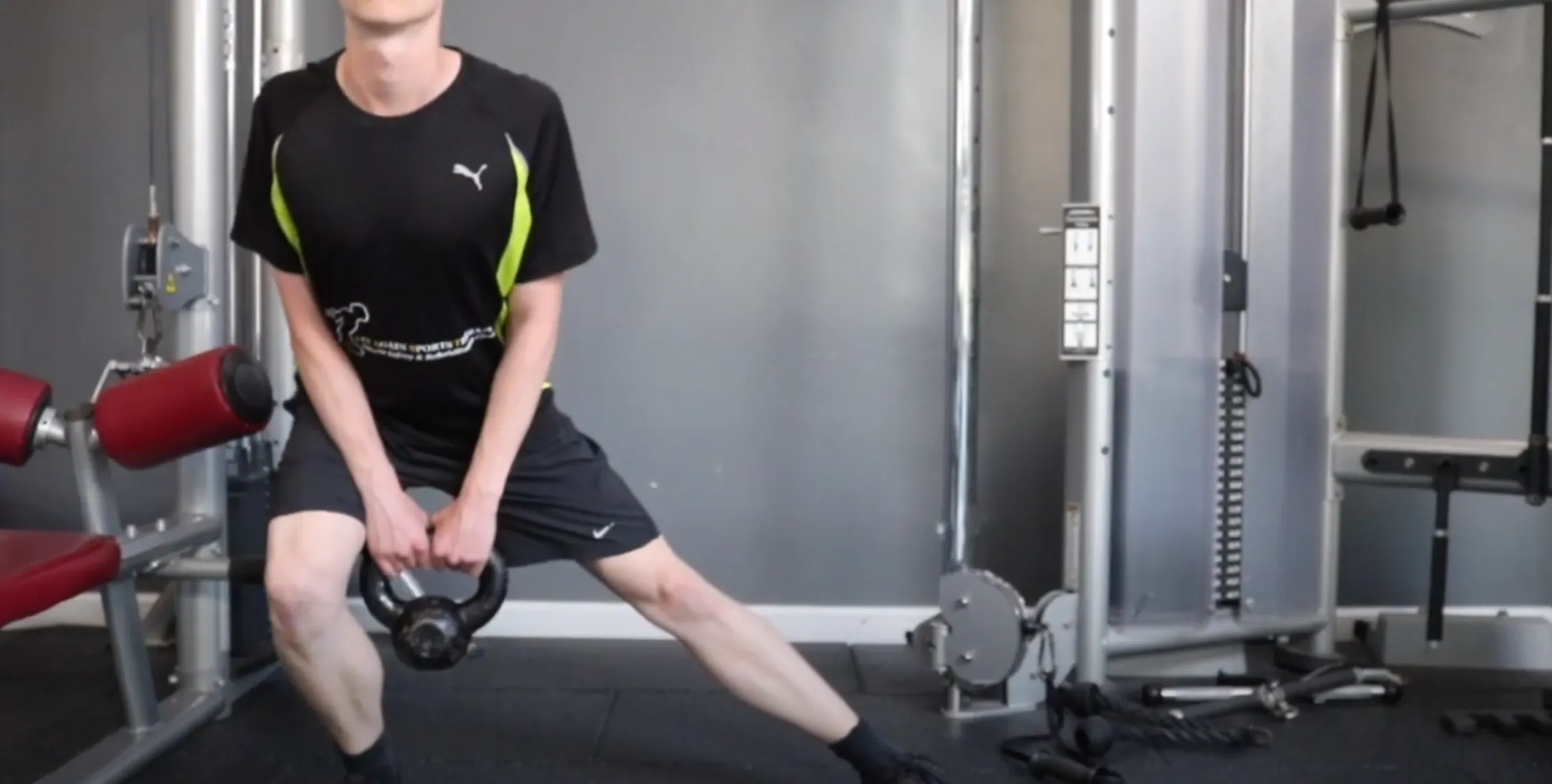Compared to running, jumping, or squatting, cycling is a low-affected exercise that minimizes stress on your knee joint. This reduces the risk of further knee damage or discomfort. Cycling strengthens the muscles around your knees (quadriceps, hamstrings, and glutes), improving patellar tracking and enhancing knee cap movement and stability.
Yes, cycling can be beneficial for patellar tracking disorder. During the workout, your knees and hips are strengthened, improving the kneecap’s stability.
In this blog post, we’ll explore whether cycling is good for patellar tracking disorder, the symptoms, exercises for patients with patellar tracking disorder, treatment options, and the benefits of cycling.
Is Cycling Good For Patellar Tracking Disorder? 7 Benefits
![]()
Patellar tracking disorder is a condition that causes pain and discomfort because of improper movement of the kneecap along the femur. Although various treatment options are available, cycling is one of the best exercises to ease the symptoms of this condition. Here are some benefits of cycling for individuals with patellar tracking disorder:
Strengthens Muscles
The benefits of cycling include a low-impact workout that boosts your knees and hips. This increased muscle strength can improve the stability of your kneecap, reducing the risk of dislocation and improving your body mechanics. Regular cycling can help alleviate symptoms and prevent further damage by strengthening your knees and hips.
Low-affected Exercise
Cycling is ideal for those struggling with patellar tracking disorder because it’s a low-affected workout. While running or performing other high-affected activities like jumping are hard on your knees, cycling provides a gentle but effective workout that won’t exacerbate your condition.
Improved Flexibility
Regular cycling can help improve knee joint flexibility, rehab stiffness, and increase the range of motion in the knee joint since cycling is a high-intensity exercise. This improvement in flexibility translates to better mobility and joint function, which can significantly ease the symptoms of patellar tracking disorder.
Weight Management
The best thing about cycling is burning calories and maintaining weight, which can take the strain off your knees. Patients with patellar tracking disorder need to control their weight because excess weight puts more strain on their knees, causing further damage.
Increased Blood Flow
Cycling increases blood flow to the knee joints, reducing inflammation associated with patellar tracking disorder. A steady blood supply to the joint is essential to function correctly, and cycling can help.
Endorphin Release
Cycling, like all forms of exercise, activates the release of endorphins in your body. These natural painkillers help reduce pain associated with patellar tracking disorder, making cycling an effective way to manage symptoms.
Improved Overall Fitness
Besides the specific benefits of patellar tracking disorder, cycling also helps improve your overall fitness and well-being. Cardiovascular health, strengthen the core, and reduce stress.
4 Symptoms of Cycling Patellar Tracking Disorder
The disease of patellar tracking disorder makes your life miserable. You must understand the symptoms to manage this condition effectively. Here are the key symptoms you should know:
Pain and Swelling
One of the most common symptoms of patellar tracking disorder is pain in the knee’s front. This pain often increases when you engage in activities that put pressure on the knee, such as squatting, jumping, kneeling, running, or walking downstairs. You may also notice swelling around the kneecap.
Unusual Sensations
People with patellar tracking disorder often report a popping, grinding, slipping, or catching feeling when knee bending. These sensations can be disconcerting and may interfere with your ability to move comfortably.
Instability in the Knee
The feeling that your knee buckles under you is another common symptom of patellar tracking disorder. Trusting your knee in everyday movements and activities can make it difficult.
Difficulty with Movement
You may find bending or straightening your knee hard if you have a patellar tracking disorder. You might be limited in your range of motion and find certain activities challenging.
Consult a healthcare professional if you have any of these symptoms. They’ll give you a proper diagnosis and suggest treatment options, which may include cycling as therapy.
5 Treatment for Patellar Tracking Disorder
![]()
Patellar Tracking Disorder is a common knee injury that affects individuals who stress their knees through activities like cycling, running, jumping, and pivoting. This condition occurs when the kneecap is displaced, causing pain, swelling, and difficulty in movement. If left untreated, it can be debilitating. The pain can be managed with various treatments that improve patellar tracking.
- Rest: Resting the knee is crucial in treating Patellar Tracking Disorder. This means avoiding activities that stress the knee joint, such as running or cycling, until the pain subsides.
- Regular Stretching and Strengthening Exercises: It is important to stretch and strengthen the muscles around the knee joint, which helps stabilize the kneecap and improve the patella around the knee joint, and this will promote patellar tracking. Strengthening exercises may include leg lifts, squats, and lunges.
- Taping or Bracing the Knee: Taping or bracing the knee can help support the kneecap and prevent it from slipping out of place. Pain relief and improved patellar tracking can be achieved because of this procedure.
- Using Ice: Applying ice to the knee relieves pain, swelling, and discomfort.
- Short-Term Use of Non-Steroidal Anti-Inflammatory Drugs (NSAIDs): When taken for a short period, non-steroidal anti-inflammatory medication (NSAIDs) can help reduce inflammation caused by Patellar Tracking Disorder. These should only be used for short-term pain relief and under the advice of a medical professional.
5 Exercise Recommendations for Patellar Tracking Disorder Patients
Patellar Tracking Disorder (PTD) is a knee joint condition caused by improper kneecap tracking. This can cause pain and instability, making exercise an essential component of PTD treatment. Exercise can help improve patellar tracking, strengthen the knee joint, and reduce discomfort. Here are some exercise recommendations for those suffering from PTD:
Patellar Mobilization
Exercises are gentle movements that help improve the kneecap movement. The exercises involve moving the kneecap in various directions while applying pressure. Studies have shown that patellar mobilization exercises can improve patellar tracking and reduce knee pain.
Metatarsal Pressure
Metatarsal pressure exercises involve using pressure on the football to activate the muscles surrounding the kneecap. The exercise may improve patellar tracking and reduce pain and inflammation.
Functional Ankle Mobility Drill
The Functional Ankle Mobility Drill helps to improve ankle mobility, which is essential for proper knee movement. The exercise involves placing a band around the ankle and performing various movements, such as lunges and sidesteps. Knee tracking can be improved, and pain can be reduced with this exercise.
Monster Walk with Band
The Monster Walk with Band is an exercise that targets the hip muscles. Strong hip muscles can help to improve knee stability and keep you safe. The exercise involves wearing a resistance band around the ankles and walking sideways, forwards, and backward. The exercise can help to improve patellar tracking and overall knee function.
Walking Adductor Lunge

Adductor muscles play a fundamental role in controlling knee movement. The Walking Adductor Lunge exercise helps strengthen these muscles, improving patellar tracking. The exercise involves taking a comprehensive step to the side and lunging with one leg while keeping the other straight.
While cycling is considered a low-affected exercise that may not exacerbate PTD symptoms, consult your doctor before starting an exercise program. These exercises can complement cycling as part of a holistic treatment approach.
Conclusion
Cycling can be a helpful exercise option for those with patellar tracking disorder. It provides a low-affected workout that won’t put undue stress on the knee joint while providing cardiovascular benefits.
A cycle can help strengthen the muscles surrounding the knee and improve overall joint stability. You must consult your physician before beginning any exercise program if you suffer from knee pain.
A person’s condition is unique, and what works for one might not for another. Therefore, finding a low-affected exercise tailored to your needs is essential and won’t aggravate any underlying conditions. So, speak with a healthcare professional and start on the road to a healthy and pain-free knee joint.
FAQs
What Causes Patellar Tracking Disorder?
The condition is often the result of a combination of factors, including weak thigh muscles, tendons, and ligaments, as well as tight or loose muscles in the leg. Activities that repeatedly stress the knee, especially those that involve twisting motions, can also contribute to the problem.
If I Have Patellar Tracking Disorder, Should I Adjust My Cycling?
It is essential to have your bike fitted correctly to ensure proper alignment and reduce strain on the knee joint. You may also benefit from using a higher gear to reduce knee stress and incorporating other strength exercises to improve overall knee health. As always, speak with a medical professional before beginning any exercise routine.


